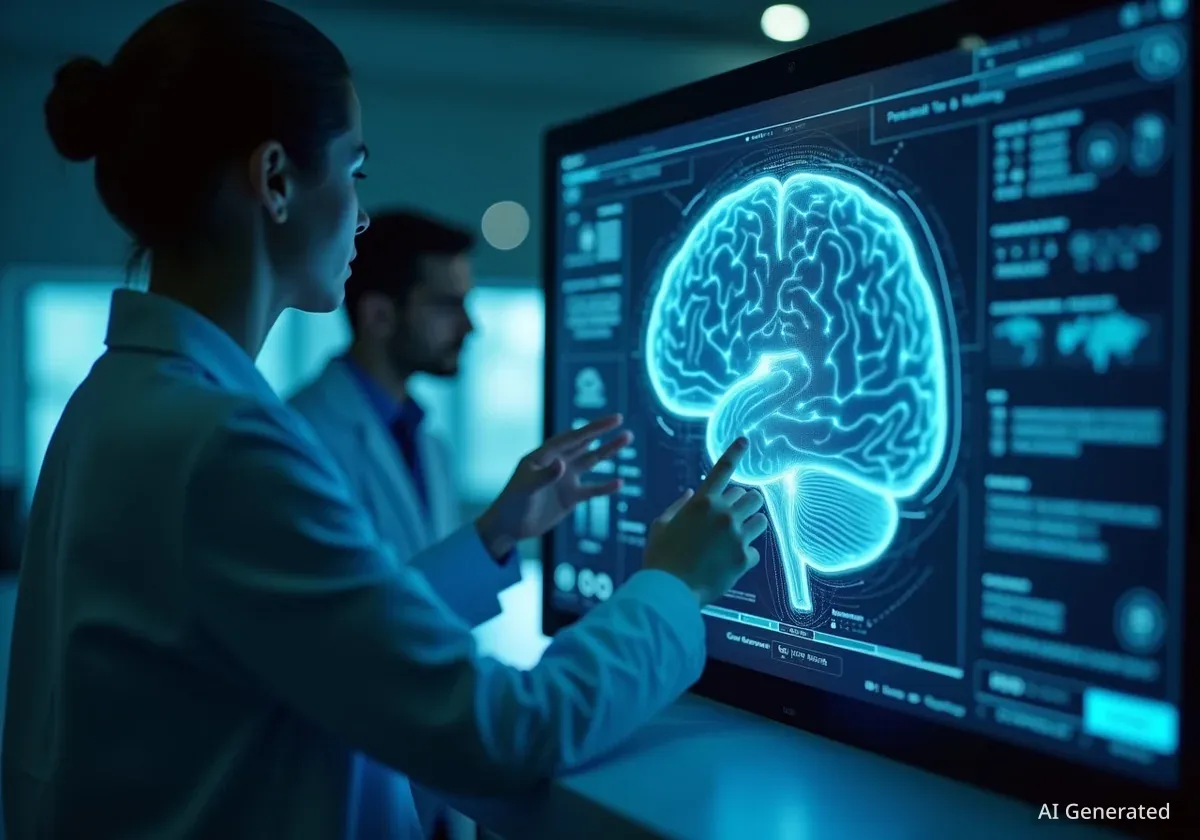Sam Altman, a prominent figure in the artificial intelligence sector, is backing a new brain-computer interface (BCI) startup named Merge Labs. The company aims to develop technology that interacts with the human brain using non-invasive methods, a significant departure from the surgical approaches used by competitors like Elon Musk's Neuralink.
The venture has brought on Mikhail Shapiro, a leading biomolecular engineer from Caltech, as a key member of its founding team. This strategic hire signals the company's focus on pioneering techniques involving ultrasound and gene therapy to create a connection between computers and the human mind without requiring open-skull surgery.
Key Takeaways
- Sam Altman is co-founding a new brain-computer interface (BCI) company called Merge Labs.
- The startup will focus on non-invasive technology, primarily using sound waves (ultrasound).
- Renowned Caltech researcher Mikhail Shapiro has joined the founding team, guiding its scientific direction.
- Merge Labs is in discussions to raise hundreds of millions of dollars, with OpenAI expected to be a major investor.
- The company's approach directly contrasts with the surgical implant model used by competitors like Neuralink.
A New Frontier in Brain-Computer Interfaces
The field of brain-computer interfaces has largely been defined by devices that require direct surgical implantation of electrodes into brain tissue. Merge Labs is charting a different course, betting on a future where interfacing with the brain is less invasive and more accessible.
The company, co-founded by Altman and Alex Blania, is developing a system that leverages sound waves. This method, known as ultrasound, can pass through the skull to interact with brain cells. The core challenge, which Shapiro's research addresses, is making neurons responsive to these sound waves.
By avoiding the need for complex and risky surgeries, this technology could dramatically lower the barrier to entry for BCI applications, potentially expanding their use beyond purely medical recovery into broader areas of human augmentation and communication.
The Science Behind the Sound
The technical direction of Merge Labs is heavily influenced by the work of Mikhail Shapiro. As a prominent researcher at the California Institute of Technology, his lab has been at the forefront of developing novel biomolecular tools for imaging and controlling cells non-invasively.
Gene Therapy Meets Ultrasound
Shapiro's approach involves a two-part system. First, gene therapy is used to introduce specific genes into targeted neurons. These genes cause the cells to produce proteins that act as microscopic reflectors or responders to ultrasound waves.
Once these cells are modified, focused ultrasound can be used to both "read" their activity and potentially "write" information to them. This creates a communication channel without any physical wires or electrodes penetrating the brain tissue.
In a recent talk discussing his work, Shapiro explained his goal is "to develop ways to interface with neurons in the brain and cells elsewhere in the body that would be less invasive." He noted that it is often "easier to introduce genes into cells" than to implant physical hardware.
This method represents a fundamental shift in BCI philosophy, moving from mechanical engineering to biomolecular engineering.
Ultrasound vs. Implants
The primary distinction between Merge Labs' reported approach and that of Neuralink is the level of invasiveness. Neuralink's device requires a surgical robot to implant ultra-thin threads into the brain. In contrast, ultrasound technology works from outside the skull, with the only invasive component being the initial gene therapy treatment, which is typically administered via injection.
Market Positioning and Investment
Merge Labs is entering a competitive but nascent market. While Neuralink has captured significant public attention, its surgical approach has also raised concerns about long-term safety and viability. Altman himself has previously expressed a preference for less invasive BCI technologies.
By focusing on a non-surgical alternative, Merge Labs could appeal to a wider user base and navigate a potentially smoother regulatory pathway. The company is already in advanced discussions with investors to secure significant funding.
Reports indicate that Merge Labs is targeting a capital raise in the hundreds of millions of dollars. OpenAI, the AI research lab led by Altman, is expected to be a significant investor, highlighting the strategic importance of advanced human-computer interfaces to the future of artificial intelligence.
Who is Mikhail Shapiro?
Mikhail Shapiro is an award-winning professor of chemical engineering and a Heritage Medical Research Institute Investigator at Caltech. His lab focuses on developing technologies for non-invasive imaging and control of cellular function using magnetic fields and sound waves. His pioneering work in "acoustic reporter genes"—which make cells visible to ultrasound—is central to the scientific foundation of Merge Labs.
The Road Ahead
While the promise of a non-invasive BCI is substantial, the path to a commercial product is filled with challenges. The technology must be proven safe and effective in extensive clinical trials. The long-term effects of using gene therapy to modify neurons will be a critical area of study and regulatory scrutiny.
However, the involvement of established figures like Sam Altman and the scientific leadership of Mikhail Shapiro provides the venture with significant credibility and resources. The company's formation marks a pivotal moment in the development of brain-computer interfaces, opening a new front in the race to seamlessly connect the human mind with the digital world.
As Merge Labs moves from research and development toward a viable product, its progress will be closely watched by the technology industry, the medical community, and anyone interested in the future of human potential.





